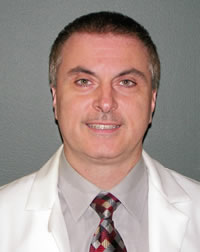Q&A with Dr. Pelino: Macular Degeneration

The first stage is called the dry phase. It’s an early withering away of retinal tissue and a tissue behind it called choroid. There’s also an accumulation of cellular byproducts called drusen. As time progresses, a certain amount of individuals will get the next phase, called wet macular degeneration. That’s when new blood vessels grow and bleed. The majority of macular degeneration is dry, but the more devastating loss of vision is from wet.
Q: What are some of the symptoms?
Initially, there may be no symptoms, but as time goes on, they may include: blurred vision, noticing the environment looks wavy, having splotchy vision or a blind spot in your field of vision. There’s usually no pain or inflammation.
Q: Who is at risk for macular degeneration?
It’s an age-related disease that typically develops after 60 years of age. It’s also a genetic disease every race can develop, but usually about 90 to 95 percent of those who get it are Caucasian. It also has environmental factors: smoking, obesity, high cholesterol, lack of exercise and poor diet can contribute to someone’s likelihood of developing it.
Those with a family history of macular degeneration should get examined earlier than 60 so the risk factors can be caught. Those with a family history, I make sure to counsel them about the condition and potential risk factors for it. Interestingly, almost the same risk factors for macular degeneration are those for heart disease as well. There seems to be some correlation between the two.
Because it doesn’t present symptoms in the early phases, you won’t know if you have it. A routine eye exam can identify it. We look to see if the drusen are present and if there’s a withering away of the retina.

Dr. Carlo Pelino is chief of The Eye Institute of Salus University’s Chestnut Hill satellite office.